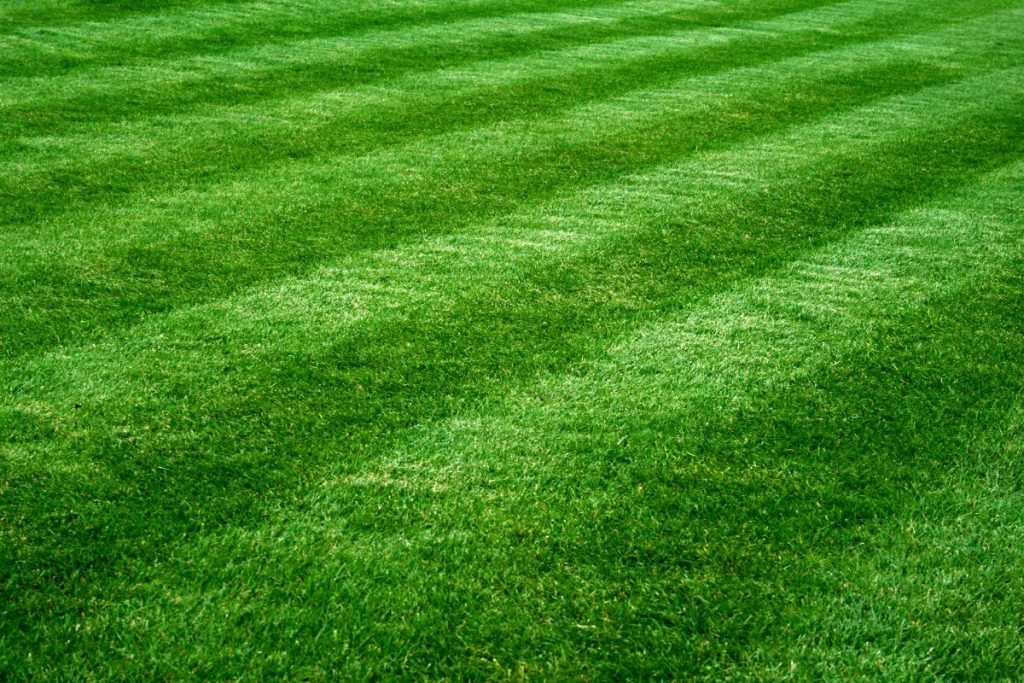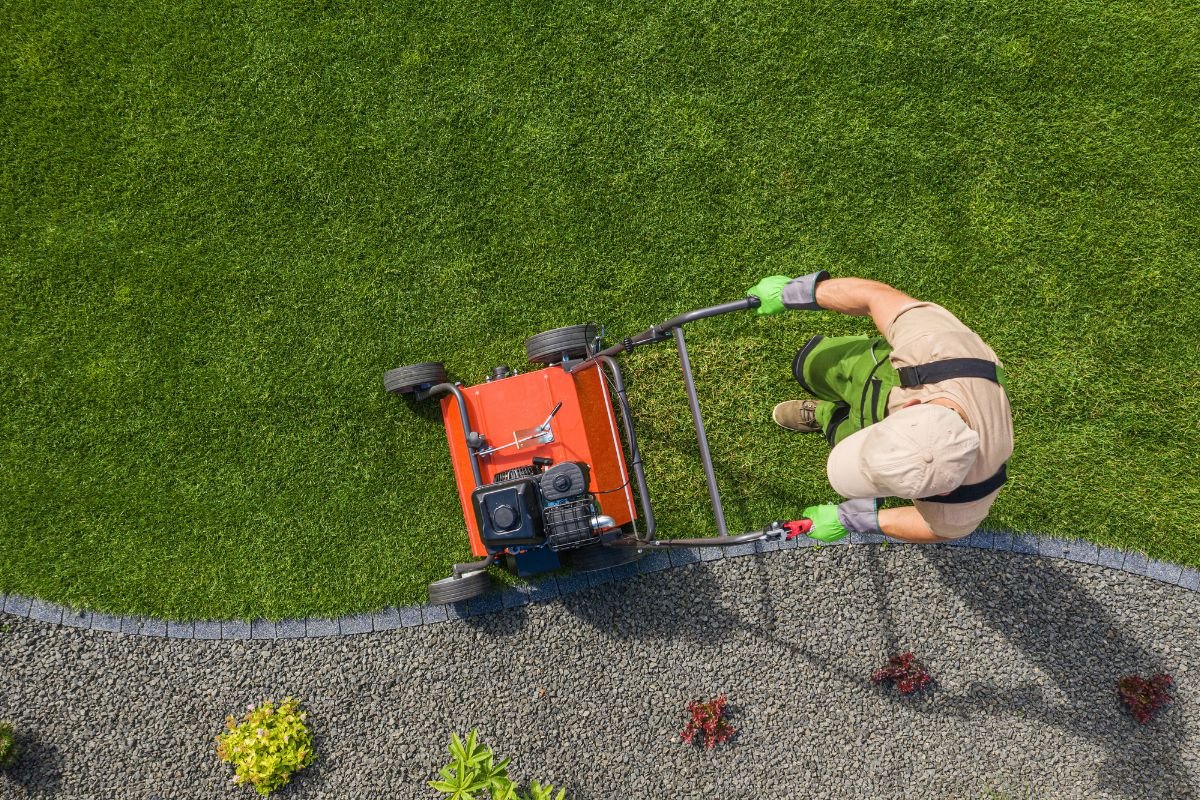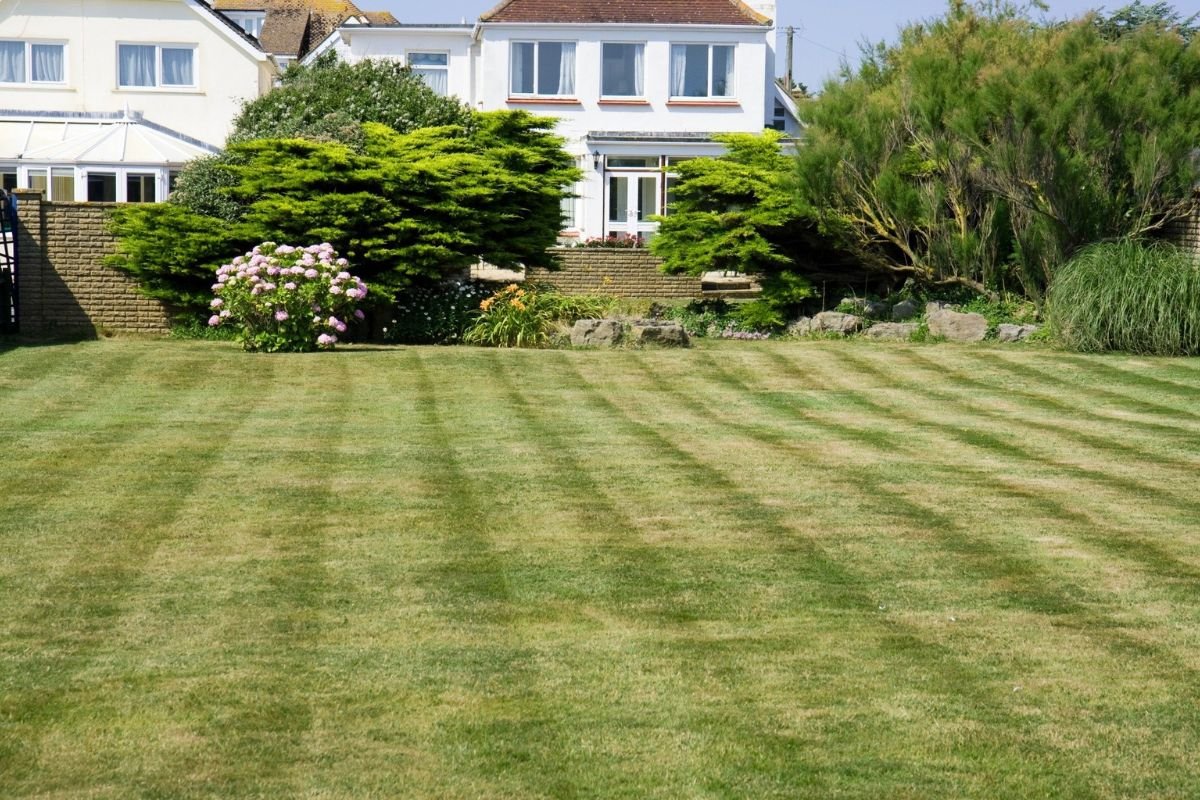
Is your lawn looking tired, patchy, or struggling to thrive? The secret to a healthy, vibrant, and green lawn often lies beneath the surface. Lawn aeration, the process of creating small holes in your soil, can be a game-changer. By improving air circulation, water absorption, and nutrient uptake, aeration unlocks your lawn’s potential. This guide will walk you through everything you need to know about lawn aeration, from identifying if your lawn needs it to understand the best techniques and post-aeration care. Let’s dive in and discover how to achieve the lawn of your dreams!
What is Lawn Aeration and How Does it Work?
Lawn aeration involves creating small holes in the soil to alleviate compaction. Over time, foot traffic, mowing, and general use can compress the soil, hindering the movement of air, water, and essential nutrients to the grass roots. Aeration counteracts this by physically breaking up the compacted soil, allowing roots to breathe, absorb water efficiently, and access the nutrients they need to flourish. Think of it as giving your lawn a refreshing breath of fresh air!
Core Aeration vs. Spike Aeration: Which is Right for You?
There are two primary methods of lawn aeration: core aeration and spike aeration.
- Core Aeration: This involves removing small plugs or “cores” of soil from the lawn, creating actual holes in the ground. Core aeration is widely considered the most effective method because it physically removes compacted soil, providing immediate relief and lasting benefits.
- Spike Aeration: This method uses solid spikes to poke holes in the ground. While seemingly simpler, spike aeration primarily compresses the surrounding soil rather than relieving compaction. It is generally less effective than core aeration and can, in some cases, worsen soil compaction over time.
For most lawns, core aeration is the preferred method. Spike aeration may provide temporary relief for lightly compacted soil, but it’s rarely a long-term solution.
Does Your Lawn Need Aeration? Signs to Watch For

Not sure if your lawn needs aeration? Here are some common signs of soil compaction that indicate your lawn could benefit from the process:
- Standing Water: Water puddles on your lawn for extended periods after rainfall.
- Hard Soil: The soil feels hard and difficult to penetrate with a screwdriver or shovel.
- Thin or Patchy Grass: Grass struggles to grow or appears thin in certain areas.
- Heavy Thatch Buildup: A thick layer of dead grass and organic matter accumulates on the soil surface.
- High Traffic Areas: Areas of your lawn that experience frequent foot traffic or parking are likely to be compacted.
- Clay Soil: Lawns with heavy clay soil are more prone to compaction.
If you notice any of these signs, it’s a good indication that your lawn is suffering from soil compaction and could greatly benefit from aeration.
Common Indicators of Soil Compaction
To further assess if you have compacted soil, you can perform a simple “screwdriver test.” Try inserting a screwdriver into the soil. If it’s difficult to push in, especially when the soil is slightly moist, it’s a strong sign of compaction. A healthy lawn should allow for relatively easy penetration.
The Best Time to Aerate Your Lawn in the USA
Timing is crucial when it comes to lawn aeration. The best time to aerate your lawn is typically during its active growing season. This allows the grass to recover quickly and fill in the holes created by the aeration process.
- Warm-Season Grasses (Bermuda, Zoysia): Aerate in late spring or early summer.
- Cool-Season Grasses ( Kentucky Bluegrass, Fescue): Aerate in early spring or early fall.
Aerating during these times allows the grass to heal quickly and take advantage of the favorable growing conditions.
Regional Considerations for Aeration Timing
While the above guidelines are generally accurate, it’s important to consider your specific regional climate and microclimate. In areas with particularly hot summers, avoid aerating cool-season grasses during the hottest months, as this can stress the grass. Consult with your local extension office or lawn care professional for specific advice tailored to your area.
Wondering if your lawn needs aeration? Check out our How to Tell if Your Yard Needs Aeration to spot key signs like compacted soil and poor drainage.
Step-by-Step Guide to Aerating Your Lawn

Ready to aerate your lawn yourself? Here’s a step-by-step guide to help you through the process:
- Water Your Lawn: Water the lawn thoroughly a day or two before aerating to soften the soil.
- Mow Your Lawn: Mow the lawn short before aerating to make it easier to maneuver the aeration equipment.
- Rent or Purchase an Aerator: Rent a core aerator from a local rental center. Make sure it’s in good working condition.
- Aerate the Lawn: Overlap each pass by a few inches for best results.
- Leave the Cores on the Lawn: Allow the soil cores to break down naturally on the lawn surface. This helps to recycle nutrients back into the soil.
- Fertilize (Optional): Fertilize immediately after aeration,
Choosing the Right Aeration Equipment
If you decide to aerate your lawn yourself, choosing the right equipment is essential. Core aerators are typically available for rent at local equipment rental stores. Look for an aerator that removes cores that are about 2-3 inches deep.
Avoid spike aerators, as they are generally less effective. Also, consider the size of your lawn when choosing equipment. For small lawns, a walk-behind aerator may be sufficient. For larger lawns, a self-propelled aerator may be a better choice.
Have questions about lawn aeration? Contact us today for expert advice and professional services to keep your lawn healthy and green!
What to Do After Aerating Your Lawn: Maximizing the Benefits
The work doesn’t stop after the aeration is complete! Proper post-aeration care is essential to maximize the benefits and ensure your lawn recovers quickly.
Watering and Fertilizing After Aeration
Water the lawn thoroughly after aeration to help the soil settle and encourage root growth. Fertilize your lawn immediately after aerating to take advantage of the open soil and allow nutrients to reach the roots quickly. Use a fertilizer appropriate for your grass type and follow the manufacturer’s instructions.
Overseeding After Aeration: Filling in Thin Spots
Aeration provides an excellent opportunity to overseed your lawn, especially if you have thin or bare spots. After aerating, spread grass seed over the lawn, focusing on the bare areas. The holes created by aeration provide the perfect environment for seed germination. Gently rake the seed into the holes and water the lawn thoroughly.
Lawn Aeration Mistakes to Avoid: Ensuring Success
Aeration is generally a safe and beneficial process, but it’s important to avoid these common mistakes:
- Aerating When the Soil is Too Dry: Aerating dry, hard soil can be difficult and can damage the equipment. Water the lawn thoroughly before aerating.
- Aerating During Extreme Heat: Avoid aerating cool-season grasses during periods of extreme heat, as this can stress the grass.
- Not Marking Sprinkler Heads or Underground Utilities: Before aerating, mark any sprinkler heads or underground utilities to avoid damaging them with the aerator.
- Using a Spike Aerator Instead of a Core Aerator: As mentioned earlier, spike aerators are generally less effective than core aerators.
When to Call a Professional: The Benefits of Professional Lawn Aeration
While DIY aeration is possible, there are many advantages to hiring a professional lawn care service:
- Expertise: Lawn care professionals have the knowledge and experience to assess your lawn’s specific needs and determine the best aeration approach.
- Equipment: Professionals have access to high-quality aeration equipment that is properly maintained and operated.
- Time Savings: Aerating a lawn can be time-consuming, especially for larger properties. Hiring a professional frees up your time and energy.
- Comprehensive Service: Many professional services offer comprehensive aeration packages that include pre-aeration preparation, aeration, post-aeration care, and overseeding.
Ready to aerate your lawn? Call us today to schedule a service and give your lawn the care it deserves!
Achieving a Lush, Healthy Lawn Through Proper Aeration
Lawn aeration is a crucial component of a comprehensive lawn care program. By alleviating soil compaction, improving air circulation, and promoting water and nutrient uptake, aeration unlocks the full potential of your lawn. Whether you choose to DIY or hire a professional, incorporating aeration into your lawn care routine will help you achieve a lush, healthy, and vibrant lawn that you can enjoy for years to come.
Frequently Asked Questions About Lawn Aeration
How often should I aerate my lawn?
The frequency of aeration depends on factors such as soil type, traffic levels, and grass type. Generally, aerating once a year is sufficient for most lawns. Lawns with heavy clay soil or high traffic may benefit from aerating twice a year.
Can I aerate my lawn myself?
Yes, you can aerate your lawn yourself using a core aerator. However, it’s important to choose the right equipment and follow the proper techniques to ensure optimal results.
What type of soil benefits most from aeration?
All soil types can benefit from aeration, but lawns with heavy clay soil are particularly prone to compaction and will see the most significant improvements.
Give your lawn the boost it needs! Call us now to schedule professional aeration services.

